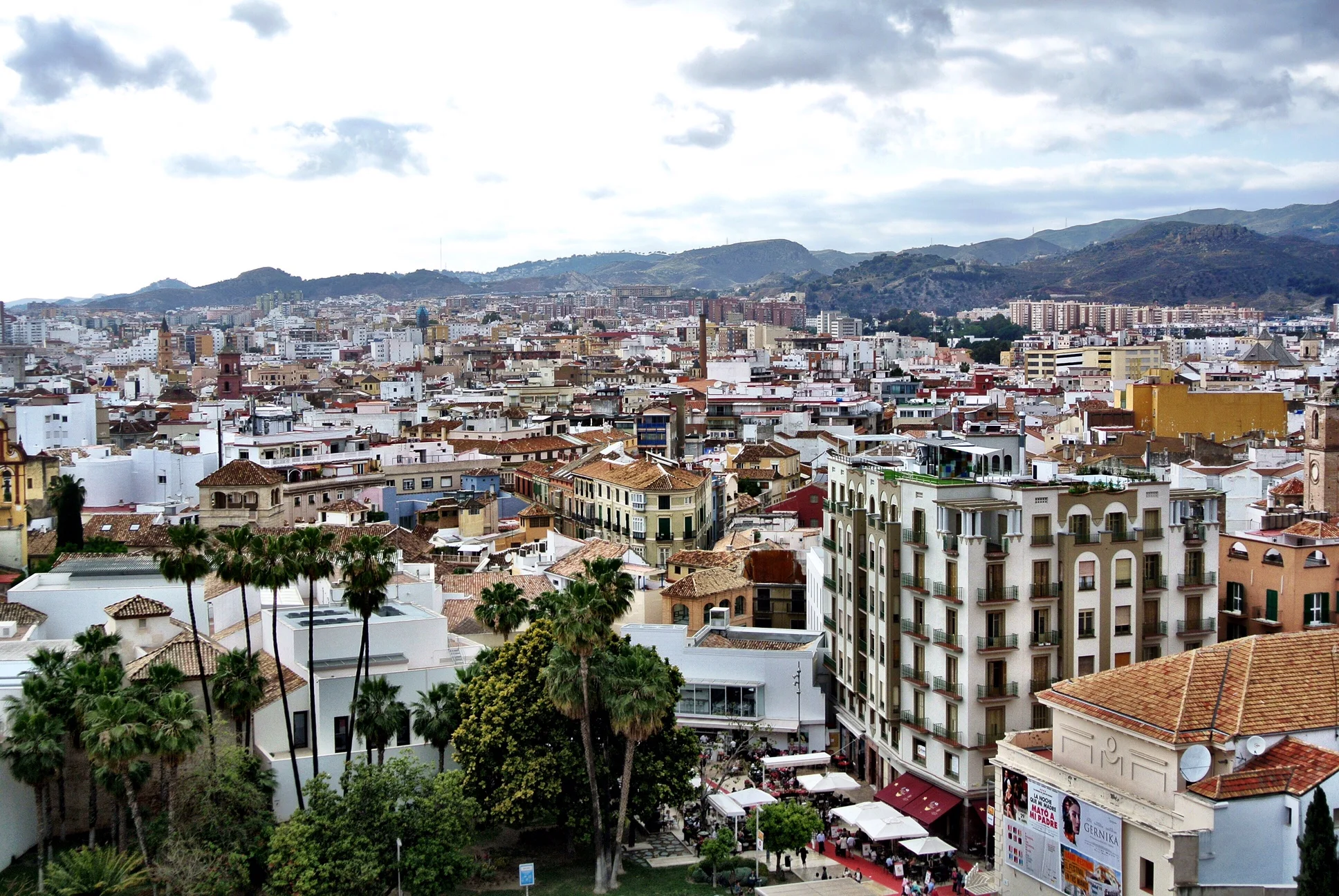What to do in Malaga? Hit these three sites: the Malaga Cathedral, a hidden abbey and a shop filled with amazing local ceramics.
One of the highlights of Málaga Centro is its impressive cathedral
There’s no shortage of centuries-old landmarks in the historic Málaga Centro — the entire city center is an open-air museum of sorts, dotted with monuments, restaurants, cafés and shops.
When we found ourselves leisurely wandering through the Moorish-inspired cobblestone streets of Málaga Centro one afternoon with our friend and guide Jo, she did not disappoint, sharing a few of her favorite spots with us.
Here is our short list of three sights worth checking out (the food and drink stops will follow shortly in other posts). From iconic landmarks like the Catedral de Málaga to hidden gems like the Santa Ana Abbey, these are all within a short walking distance of each other.
The quiet Santa Ana Abbey was a fun discovery
Stop 1: Santa Ana Abbey
Tucked into a narrow alleyway in Málaga, we stumbled upon the Santa Ana Abbey. More commonly known as the Cistercian Abbey, the vibrant coral-hued façade contains an 18th century statue of Santa Ana.
A statue of Jesus in a niche at Santa Ana Abbey
This could be Santa Ana herself…or it might be Mary
The abbey comprises a sole nave and includes works by celebrated Spanish Baroque sculptor Pedro de Mena and his daughters, Andrea and Claudia, both of whom were Cistercian nuns. De Mena dedicated his life's work to producing sculptures depicting religious imagery, just as his father had done before him.
Off to the right of the sanctuary is a small candlelit nave
Originally from Granada, de Mena had a studio in the nearby Calle de los Alfligidos, and by his request was interred and buried at the entrance. According to local lore, the artist’s wish was “that he should lay in a place where his remains could be trodden on by the faithful because of his humble person.”
While shopping at Alfajar, Duke and Wally ended up buying this ceramic handcrafted dove, a symbol connected to Picasso, who loved to paint them
Stop 2: Alfajar
You’re bound to find something at Alfajar, a boutique shop specializing in high-quality contemporary handmade ceramics created by local artists.
The store is located within the historic Zea-Salvateria Palace, a Baroque-period structure built in the late 17th century. The building was originally host to the City Council of Málaga during the reign of Isabel ll and subsequently home to the post office for many years after.
The fanciful signed pieces are displayed on open shelving among the white walls and high ceilings of the former estate. Inspired by the heritage of regional pottery craft, the shop’s philosophy is to celebrate these divergent influences and breathe originality into the medium.
Wally and I knew we had to take one home, but it was difficult to make a decision, as each piece was unexpected and unique. The colors employed are the result of metallic oxide glazes that are only revealed once the piece has been kiln-fired and cooled. We finally decided upon a ceramic dove on a wooden stand — emblematic of hometown hero Picasso — and a horse in the Nazari style. These pieces were quite affordable, and the shopkeeper took great care in wrapping our purchases.
The single tower gives the cathedral a lopsided feel — and earned it the nickname la Manquita, the One-Armed Lady
Stop 3: Catedral de Málaga
It’s time to go for Baroque (amongst other styles)! Across from Alfajar is the Catedral de Málaga, the main church of the city. Built on the foundations of a former mosque, the cathedral façade is Baroque, the floor plan Gothic and its interior Renaissance. This mishmash of styles is due to the fact that construction took more than three centuries to complete.
Apparently the original plan of its architect, Diego de Siloe had two towers. However, the second is incomplete and earned the structure the nickname la Manquita, the One-Armed Lady.
Jo and Wally on the front steps of the Malaga Cathedral
A plaque located at the base of the tower states that funds raised by the parish were sent to aid colonists who had fled Great Britain to gain their independence — although there is evidence that the money actually went to fund emergency public works in the province.
The cathedral gardens are worth exploring
We were unable to enter the cathedral proper that day (get there before 5 p.m.), but followed a wedding party smoking cigarettes in the side garden before the ceremony in the Church of El Sagrario, an ancillary chapel on the property filled with impressive religious artworks. We popped into the church only briefly, not up for actually crashing the wedding (as Wally pointed out, Catholic mass takes way too long).
We decided not to crash the wedding at the Church of El Sagrario after all
Returning the following day, we were able to see the cathedral’s interior. The space is majestic, with ribbed vaulted ceilings, an impressive 18th century pipe organ and finely carved statues of the saints by de Mena.
Photography was not permitted, as a service was taking place, and I got yelled at by one of the guards who were watching us closely, and quickly put my camera away. (Wally, however, is more fearless than me and was able to sneak in a shot.) Don’t dare try taking interior photos if you don’t want to get scolded.
Wally took this one shot of the interior of the Málaga Cathedral, before the guards gestured violently at him
If you don’t make it inside, don’t feel too badly — the exterior courtyard and gardens are worth exploring. I’m not sure if the no-photography policy was only when services are taking place, but you can always wander around the over-the-top Church of the Holy Martyrs instead. They let you take as many photos as you want. You can see ours here. –Duke






















